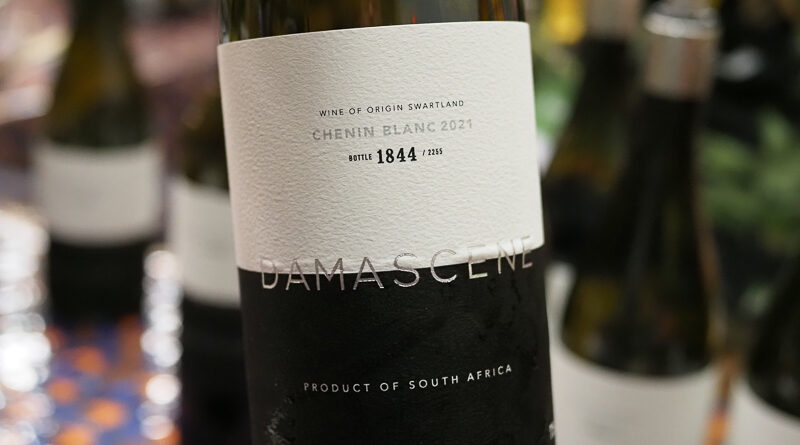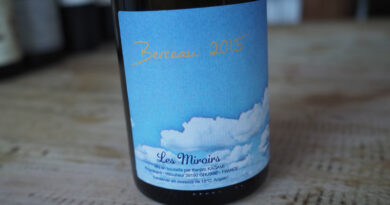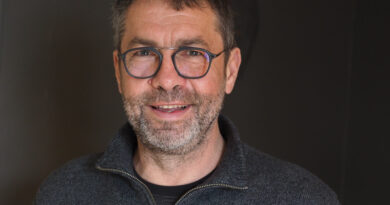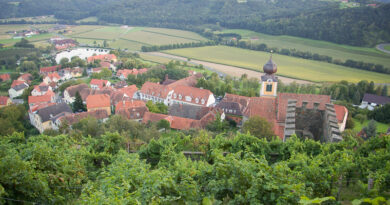Damascene, the new star from South Africa
One of the most exciting producers to emerge from the already very exciting South African wine scene in the last few years is Damascene. The winemaker here is Jean Smit, and when Ring and I first visited in November 2019, the wines were being made in a winery in Sir Lowry’s Pass. In 2020 Damascene moved into its own cellar in Elgin.
Previously, Jean had worked at Rustenberg, and more recently at Boekenhoutskloof. But he was ready to do his own project.
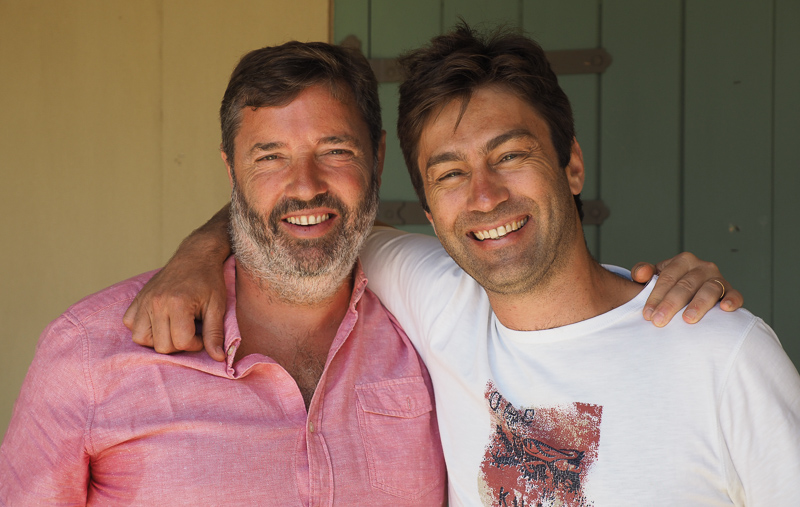
‘In July 2017 David [Curl] phoned me up, and said come and make some wine for me in Elgin,’ says Jean. ‘The meeting started with planning to make wine in Elgin and then two hours later we realised we wanted to make wine from all over South Africa. It’s a project that I’ve always been dreaming about.’
‘The idea behind Damascene is getting an epiphany or a damascene moment. It is mind or perception-changing moments in life. It happens to everyone in different places or with different experiences. I wanted people to come on a journey with me, with wine. It might either be a wine that changed your life, or a vineyard site, or vacant land that I stumble across that is something special. It is those goosebump movements. Wine is one of things where you can get other people to experience it with you.’
‘I worked with Adi Badenhorst for three years at Rustenberg, and my first wine damascene moment was when I was still digging out a tank. And he said stop, this is going to be a religious experience, leave everything and he popped a glass of wine in my hand. It was the 1982 Rustenberg. You get to a moment when you realise that this is South Africa that can stand up to the world. The 1984 that came after that was maybe even more special, but that was my moment that stopped me in my steps.’
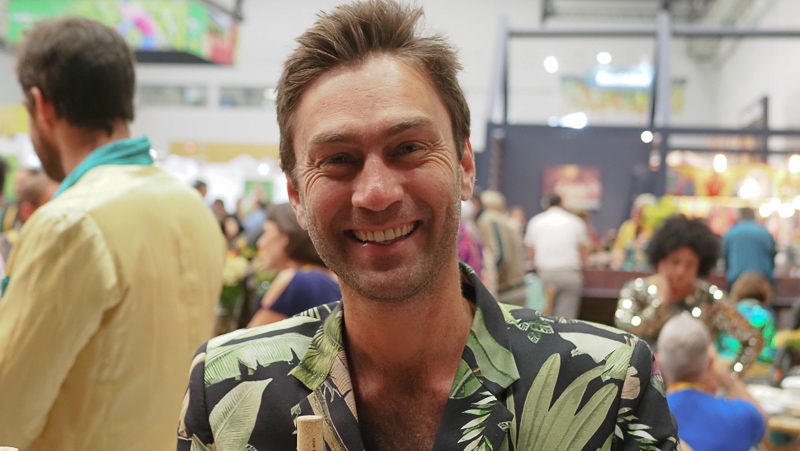
Sémillon
‘The Sémillon is something I worked at Boekenhoutskloof for close to 10 years. I was there from 2008-2017. For me, this was the grape that cut the deepest. The first truck that came here was Sémillon. When Adi left for the Swartland I knew that I had to do my own thing, so I went to Mark Kent to learn about Syrah. But when the first truck arrived it was Sémillon and it was red and white in the same truck and you think this has got to go down the road, it is not for Boekenhoutskloof! It was the Sémillon Gris that was in there. The vines were planted in 1902, 1936 and 1942. There was quite a bit of mutation there: some of it was up to 25%. There were a few blocks in the valley that I wanted to work with, planted 1942 and 1962. They are both on alluvial soil. I have this in Burgundy bottle: it’s not about Bordeaux. It is showing what Sémillon is about and what Franschhoek is about. I want the wine to show those tertiary flavours at an early stage.’
‘In the beginning you get white peach and pithiness that is typical for Franschhoek Sémillon. In 2018 there was 10% of 2017 in there to bring a bit of complexity. With Sémillon, I want some oiliness. It is a fat grape but you want to capture the acidity, otherwise it can become flabby. This is 5.5 acidity with 3.2 pH. That’s they key, giving longevity and focus.’
‘Some people say Sémillon is a hard sell, but we sold out in 26 days. It’s the same with Cabernet Franc: I think there’s a massive movement to Cabernet Franc in this country.’
Most of the blocks are long-term contracts, but still are in an experimental stage.
David Curl
Jean is working in partnership with David Curl, and we met on the first visit in November 2019. David’s interest in South Africa is that he married a south African girl. ‘I had bought a property in Bordeaux in 2006, called Château Canon in Canon Fronsac,’ David explained. ‘I absolutely loved it and we spent lots of time there, because I was working in London. But then we moved here and had three kids. We bought a property here. We had originally started looking in Hemel-en-Aarde in 2010. I wanted to find somewhere where we could try to make Pinot. Peter Finlayson was a family friend of my wife and he was very helpful. We spent months looking in Hemel-en-Aarde but couldn’t find anything that really pushed our buttons. He said if he was starting again he’d go to Elgin. So we did, and quite quickly found something we fell in love with. It happened to be an apple farm. We bought a 250 hectare apple farm so we could get 3 hectares of Pinot. It turned out well because apples are a fantastic business. I wasn’t an apple farmer when I came but I am now. I was using the winemaker from France and he fell in love with it as well. We immediately planted Pinot Noir in 2011. As time went on it became too much to be running the business in France as well. France is a hard slog. We had 14 ha in Canon Fronsac and 8 ha in Castillon, so we decided we would sell France and put all our eggs in here. We sold that in 2016, and this is why we could no longer use the winemaker from France. So I called Peter Allen Finlayson and asked if he was interested in making some Pinot for us, and he said he had a lot on his plate. I said if you were in my position, who would you call? He said there’s one guy, and I know that he wants to do something on his own, and he’s the one guy out there that hasn’t started his own project yet but really has to – Jean Smit.’
‘Jean and I hit it off very quickly. The farm is in Elgin, and that’s where the Pinot comes from. We are looking for a Chardonnay site on the farm and will probably plant Chardonnay. That’s all branded Molly Meaker, the name of my wife’s late mother. Damascene is everything that is not from the farm and Molly Meaker is everything from the farm.’
The wines are being made at the farm in Elgin, in a cellar built in 2020. Jean says that the conversion rate of sugar to alcohol by the yeasts is 0.49 here when normally it is 0.57. All the wines have been made with wild fermentation in this cellar, and the first wine made here was the Swartland Chenin. ‘The purity of the wines screams even with spontaneous fermentation,’ says Jean. All the whites are made in 1000 litre oval foudres on their lees without sulfites until bottling.
Cabernet Franc
‘When you think of South African Cabernet Franc you think of bell pepper and everything wrong about the variety,’ says Jean, ‘but there are a few sites out there that are spectacular. Working with the Journeyman at Boekenhoutskloof I always got those notes of fennel that for me is a unique style of Cabernet Franc in this country. I started working with a block next to Kaapzicht: Danie Steytler pointed me towards it. It is an east-facing block that is very special, and it is from exceptionally poor granite soils. It is CF1 clone, but the berries are very small. I only keep it on the skins for about 10 days.’
Syrah
If you have worked for Marc Kent for more than 10 years, Syrah rubs off on you,’ says Jean. ‘Tim Rands was a very good friend of ours for many years, and that’s how I got into the business. But Adi was the first person to say to me if you want to learn anything about Syrah then go to Marc. The 1997 Boekenhoutskloof was my local Syrah moment. I said to David, we can do all of this, but one thing is bothering me: how can that wine be so different to the rest of Stellenbosch? So we went out and bought fruit from 15 different sites throughout Stellenbosch, to try and name that style. I didn’t want to get to that same wine, but rather to nail that style. I knew that that style is out there, but people just throw a whole lot of oak at it, or pick it too late, and get a lot of darker fruit. From the 15, we picked two sites: one from Bottelary Hills facing north, which gives structure and backbone, and the other one is Karibib, where Reenan and Lukas get Syrah too. We take that top 15 rows of that block. It was 5 d into fermentation, and I said to David we need to sign up for 5 years with an option for 10 years. What filled the air was something that I’ve never experienced in South Africa.’
‘There were 10 fermentations for these two sites. I wanted to push things in the cellar. So we did between 50% and 100% whole bunch, and some of it we did carbonic maceration. Not carbonic maceration like people say they do whole bunch: it is putting the bunches in a stainless steel tank, putting it under pressure and not touching it for 30 days. It was through malolactic and through primary fermentation, so we pressed the next day to barrel and sulfured up. With carbonic maceration, it is important for me in this blend because there is a sense of fruit and perfume that comes from it, but you can lose sense of place with too much carbonic maceration: it just becomes another Beaujolais-kind of wine. It pulls it a bit more towards the old world and gives it a bit more flesh. For me it needs to be 10% or under. Then the last portion is sumberged cap. It’s like a plunger. It’s the same gear that Callie [Louw] also started with at Porseleinberg. As soon as fermentation is started and the cap rises we do delestage and screw the wooden plate down on top of the skins and then we bring the must on top of it. If you do much of this the wine becomes too fruit driven. This is 20% of the blend.’
‘People talk about mature stems and lignified stems,’ says Jean. ‘but it is a load of bull, you don’t get it in South Africa. It is about having it on the stems for a short time. We have it about 8 days on the stems and then take it off. What’s very important with all our wines is whole berry fermentation. We take the destemmer over the tank. It’s a slower fermentation and you extract less-harsh tannins. We do a combination of punch downs and pump overs. It is not about lignified stems, it is about being subtle when you handle them.’
‘Stems give a nervousness in the wine initially, but after 10-15 years this is what brings the brightness to the wine.’
‘Syrah is the wine that as a red variety that can show the diversity of South Africa the best. Cinsault is a close second. Chenin is the variety with whites.’
Ring (TR) and I (JG) caught up again with Jean at the end of 2022 in South Africa. Here are our notes.
THE WINES
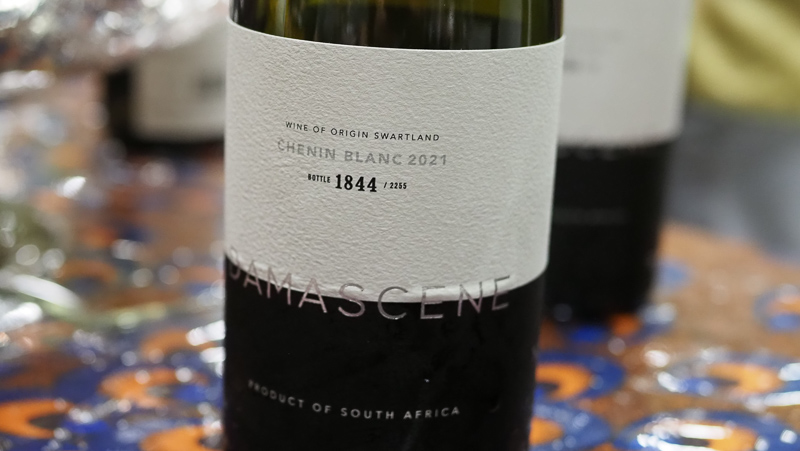
Damascene Chenin Blanc 2021 Stellenbosch, South Africa
This is from three sites, planted in 1972, 1981 and 1981, all on top of a ridge at 325 m. The wine is pressed oxidatively and like all the whites it is fermented and matured in 1000 litre oval foudres, left on lees with no sulfite additions until bottling. Powerful, lively and fresh showing some spicy notes, minerality and notes of pear, peach and crystalline citrus fruit. So expressive with great precision – there’s no malolactic here. 95/100 (JG)
From 3 Stellenbosch ridge sites (1972, 1981, and 1981 plantings) and granite / shale soils, this was native fermented and aged 11 months in 1000L Stockinger foudres, on lees, with no MLF. Savoury and tight, edged with pear skin, streaming citrus and salinity along its long, slender, and slightly grippy frame. Lovely expression. 92/100 (TR)
Damascene Chenin Blanc 2021 Swartland, South Africa
This is from Jakalsfontein, across the road from Eben, on granite soils on the Paardeberg. Taut with layeres of lemon, lime and even dried herbs. There’s a twist of salinity here, with some nice sour lemon on the finish. Lovely taut fruit here, with a hint of mint. 95/100 (JG)
This is their second vintage of the Swartland Chenin, sourced from 2 farms in the Paarderberg’s granite soils. As with the Stellenbosch Chenin, this was native fermented in Stockinger, where it remained 11 months on lees, sans MLF. Savoury and saline with fine lemon and subtle apple lit with a granitic grip and held taut along the pure, lengthy frame. 93/100 (TR)
Damascene Sémillon 2021 Franschhoek, South Africa
This is from bush vines planted in 1942, matured in foudres. There is 15% Semillon Gris in this block, co-fermented. Complex and finely spiced with a mineral twist. So textural with ripe pear and apple fruit, showing some richness on the palate. This has concentration and richness but finishes fresh with some fine spices. So linear and precise, and slightly salty on the finish. 96/100 (JG)
From bush vines planted in 1942 and 1962, this Sémillon was cofermented with 15% Sémillon Gris, which ripened at the same time. After a native ferment, this rested 11 months on lees, sans MLF, in Stockinger foudre. So expressive, with a lovely elegant density along a silken, waxen palate, lit with stony spice. Finishes long and saline. Wow. 94/100 (TR)
Moya Meaker Riesling 2021 Elgin, South Africa
Bokkeveld shale, planted in 2006, vinified in stainless steel. Intense, concentrated, pure and limey with lovely concentration. Very bold with intense citrus fruit, showing energy and precision. There’s a tiny hint of sweetness (6.9 g/l residual sugar) and this has power, weight and layers of flavour. 95/100 (JG)
From the home farm, these 2006-planted vines are rooted in Bokkeveld shale, and the grapes native fermented in stainless. Sleek and taut, with lime pith, lime peel, green apple woven with petrol across a lightly vibrating palate. Easily carrying the wee bump of RS (6.9 g/L). 92/100 (TR)
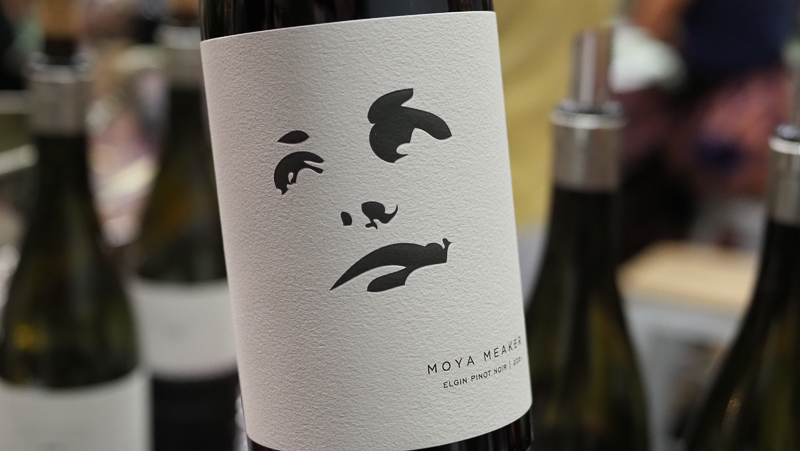
Moya Meaker Pinot Noir 2021 Elgin, South Africa
So supple and elegant. Very fine with sweet red cherries and some lovely silkiness. Shows fine elegant red cherry and plum fruit with lovely purity and elegance and appealing floral cherry notes. Lightness, elegance and purity here. 95/100 (JG)
From the home farm, this pinot was done whole berry, with native fermentation beginning in concrete and moving to Stockinger and 300L Burgundian barrels (25% new). The wine rested there for 11 months. Very elegant, with perfumed raspberry and strawberry wrapped with long, fine grained tannins through a lengthy finish, threaded with salinity throughout. 92/100 (TR)
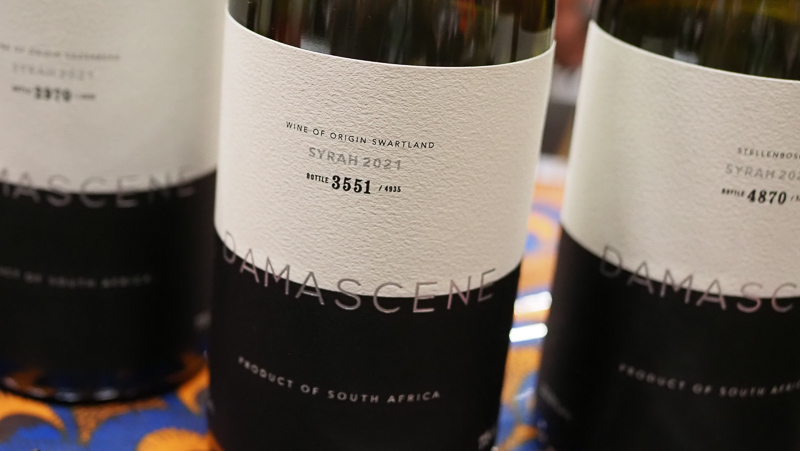
Damascene Swartland Syrah 2020 South Africa
13% alcohol. Sourced from schist and granitic soils on slopes. Taut aromatics with bright cherry and raspberry fruit with some notes of meat, tar and pepper. The palate is bright and focused with sweet cherry and berry fruits allied to savoury notes of red pepper, spice, and some grainy grip, as well as some saline hints. There’s a hint of orange peel and lime here, adding brightness, as well as compact red fruits. Lots of potential for future development, and not all that common to find this level of brightness from the Swartland, finishing with iodine and a slight salinity. 95/100 (JG)
Damascene Swartland Syrah 2021 South Africa
70% comes from the Kasteelberg facing east, with schist/shale soils. 25% comes from granitic soils which gives perfume, and the remaining 5% is from ferricrete. Submerged cap on schist and ferricrete to soften tannins. So fresh, peppery and expressive with lovely bright fruit. Elegant and expressive. 94/100 (JG)
From 3 disparate vineyards across the Swartland, predominantly from Kasteelberg, at 340m, and a mix of granite, shale, ferricrete, and schist, this was 75% whole cluster, and entirely whole berry (not carbo because there was no pressure). This was native fermented in conical concrete, and then into Stockinger for 11 months. Expressively perfumed, with violets, dusky wild black plum, bloody ferrous notes, and white pepper, this fresh, savoury Syrah is textured with fine, long tannins, finishing with a lick of stony salinity. Lightness and depth at once. 95/100 (TR)
Damascene Cederberg Syrah 2019 (sample)
940 m altitude vineyard 8 km from the Cederberg winery with rocky sandstone over laterite soils. Planted 2006. Fresh, pure, vivid and elegant. Floral cherry and raspberry fruit with incredible bright, red fruit character with some grippy structure. Very fine-grained and tightwound, but also shows some generosity. Firm tannins but they are cloaked with silky red fruits. This is very different, and quite wonderful. 94-96/100 (JG)
Tank sample. From 900m altitude, this opens with a reductive edge before, black anise, dark earth, ferrous earth come through, wrapped with big grippy sides. Great freshness and structure at this stage, but still wild and severe. 92/100 (TR)
Damascene Cederberg Syrah 2020 South Africa
13.5% alcohol. Floral black cherries on the nose but also some serious, savoury spicy, slightly dusty quality with dried herbs, pepper and roast meat. The palate has really fresh acidity, with vivid raspberries and some juicy brightness, as well as lush, meaty, peppery black and red cherry fruit, finishing with some raspberry crunch. A really distinctive Syrah, with more red fruits than black and tangy acidity on the finish. Still quite tight and structured, and this might be amazing in a few years. 94/100 (JG)
Damascene Cederberg Syrah 2021 South Africa
80% submerged cap. Lovely perfume with a lively grippy palate that shows firm tannins with some peppery notes as well as intense raspberry and cherry fruit. Big but still elegant with keen acidity. Lots of concentration and potential for development. 95/100 (JG)
From a high altitude site (940m!) planted in 2006, this Syrah reflects the affect of altitude and the stark diurnal shift of mountain viticulture. Rooted in rocky sandstone over ferricrete, this was partial whole cluster with the rest whole berry and predominantly native fermented with a submerged cap in conical concrete before 11 months in Stockinger. Firmer and darker than the Swartland Syrah, with a flash of reduction, black raspberry, blackberry over a stony, crushed rock underlay. Bright acidity easily carries the concentration through a lingering ferrous finish. 94/100 (TR)
Damascene Stellenbosch Syrah 2020 South Africa
13% alcohol. For the Syrah from Stellenbosch they went out and bought fruit from 15 different sites to try to nail the 1997 Boekenhoutskloof style. ‘The style is out there,’ says Jean, ‘but people either throw too much oak at it or pick it too late.’ From these 15 they picked two sites, both on granite. One in Bottleray (North facing), the other in Karibib (Polkadraai, south facing). ‘Five days into fermentation we signed up for five years with the option of 10 years.’ This is matured in Austrian foudres. Floral black cherry, meat, spice and pepper on the nose, with some dried herbs. The palate has concentration and focus, and lots of structure underneath the taut black cherry and blackberry fruit. Keen acidity allied to the structure, giving a slightly tight and initially unyielding quality, but patience is rewarded. Has lovely acidity as well as the ripe but taut fruit, and lovely cured meat savouriness. A special example of Syrah: I look forward to seeing this develop in bottle. 95/100 (JG)
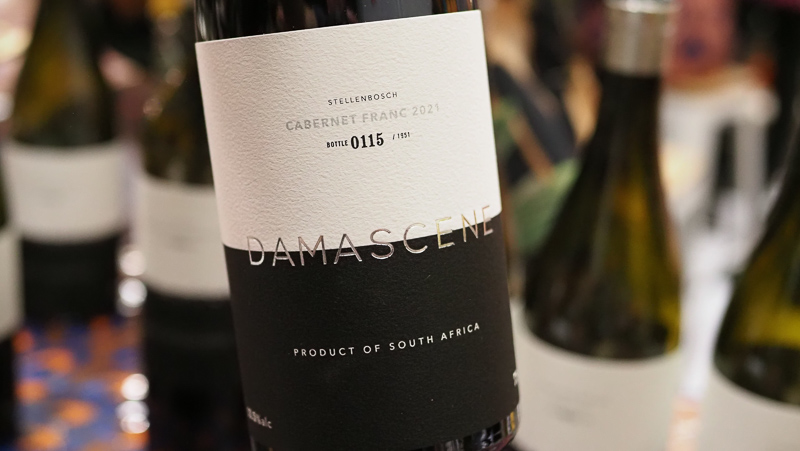
Damascene Bottelary Cabernet Franc 2021 Stellenbosch, South Africa
East-facing block on poor granite soils on a farm next to Kaapzicht, east-facing soils. CF1 clone, with exceptionally small berries. Kept on the skins for just 10 days. Made in foudre. Supple and refined with lovely red cherry and red currant fruit. Chalky and grainy, and quite elegant. Fine, fresh and pure with a bit of grip on the finish. 95/100 (JG)
From steep, east-facing granite slopes in the Bottelary Hills, this Cab Franc was planted in 2004, at 250m. Destemmed fruit was native fermented in concrete tulips before resting in 1000L oak vats over 11 months. Wild black cherry, raspberry floods a fine grained saline palate, with a buzzy stony underlay which lingers on the finish. Elegant. 94/100 (TR)
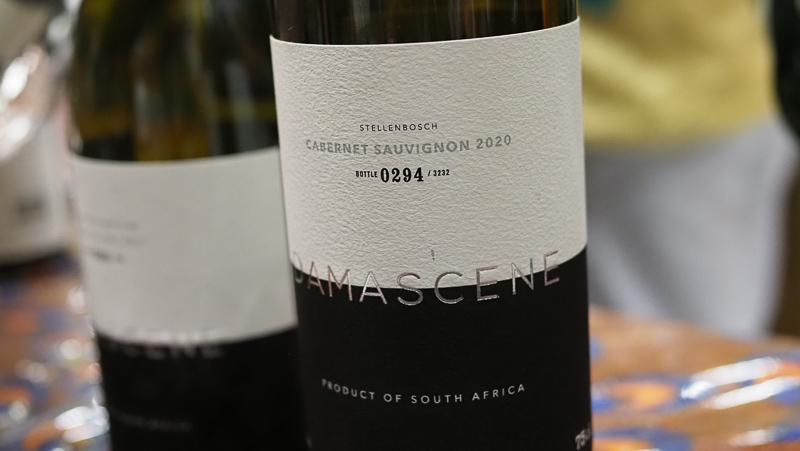
Damascene Cabernet Sauvignon 2020 Stellenbosch, South Africa
75% comes from a block next to Boschkloof, and 25% from the Helderberg. 11 months in small oak, 11 months in foudre. Such finesse here with sweet, sleek blackcurrant fruit with some stoniness. Notes of gravel and spice, as well as good structure. There’s real finesse to this wine which is concentrated, elegant and very fine. Massive potential. 96/100 (JG)
From 3 different granitic soiled Stelly sites (75% Polkadraai, 25% Helderberg), this was destemmed and native fermented in concrete before spending 11 months in barrique followed by 11 months in Stockinger. Dusky wild cassis, black raspberry rule a perfumed, savoury and highly structural palate, with long, lightly grippy tannins taking this to a lingering saline finish. Very impressive. 95/100 (TR)
Older notes from November 2019
Damascene Sémillon 2018 Franschhoek
From two plots planted in 1942 and 1962, wild fermentation in older barrels. Ripe with honey, nuts and apples with nice focus to the citrus fruit palate, and some hints of melon and spice. Such focus and precision. Lanolin and hazelnut on the finish. Such personality here. 94/100 (R400) (JG)
From two sites planted in 1942 and 1962, this also blended in 10% of the 2017 for some older sém oiliness. This spent 11 months on lees, sans bâtonnage. There’s a lovely waxy mid palate, with honeysuckle, gentle white perfume, and a wave of nutty maturity. 91/100 (TR)
Damascene Sémillon 2019 Franschhoek
pH 3.2, 5.5 TA. So concentrated with a lovely spicy, flinty framing to the concentrated citrus, peach and pear skin flavour. Ripe and really rich, but also shows freshness with a long, tapering chalky finish. Quite profound. 94-96/100 (JG)
Tank sample. In comparison to the 2018, this is much fresher and tighter, with lemon blossom, pretty bright florals, and verbena across a racy and bright palate, finishing with tight minerality. 92/100 (TR)
Damascene Cabernet Franc 2018 Stellenbosch
12.75 alcohol. East-facing block on poor granite soils. CF1 clone, with exceptionally small berries. Kept on the skins for just 10 days. Lovely nose with gravelly, spicy aromatics, a touch of green and sweet black fruits. The palate has spice, fennel, black cherries and blackberries. So fresh with real intensity, nice structure, depth but also balance. Very pure and fine. Remarkable stuff. 95/100 (R400) (JG)
From an east facing block (rather than the typical north facing) with poor granite soils, this CF1 clone has very small berries, providing extra structure. Quite fresh, with dusty black graphite, herbal dark earth, floral dark plum, thorns, and subtle peppery spices, all gripped with a fine granite handshake. 93/100 (TR)
Damascene Syrah 2018 Stellenbosch
50-100% whole bunch, including a portion in stainless steel under pressure with CO2, left it for 30 days. 13.2% alcohol. Aromatic, floral and peppery with amazing elegance to the fleshy but fine black cherry and blackberry fruit. Some charcuterie notes, as well as ginger and cinnamon spiciness, as well as white and black pepper. Lovely structure here with amazing balance. 96/100 (JG)
They trilled 15 different Stellenbosch sites to find the desired style, and selected two ( top of Polkadraai, and Bottelary), with 10 fermentations between them. Partial whole bunch, with under 10% carbo in stainless. Brooding, dark violet and perfumed black fruit, with softly grippy / sticky tannins to a peppery finish. 92/100 (TR)
Damascene Syrah 2019 (sample)
Lovely meat, pepper, charcuterie notes as well as structured black cherry and blackberry fruit. Lovely freshness and brightness, with good structure and some nice precision. Very stylish, showing concentration and freshness. Floral and bright. Lovely structure too. 94-96/100 (JG)
Tank sample. From two sites at 219 and 400m altitude, this shows lovely dark perfume, wild blueberries and blackberries, and a brooding perfume of violets. 13.5% with fantastic concentration and freshness to match. Looking forward to trying this when complete. 93/100 (TR)
Cabernet Sauvignon 2018 (cask sample 1)
This will be a third of the blend. North-facing block on Helderberg Kloof, near Somerset West. Granitic soils. Very distinctive spicy blackcurrant bud nose. Tarry and mineral. The palate is bright and fruity with tarry, spicy blackcurrant fruit. Has a sweet core to it. 93-95/100 (JG)
Bright, lifted, wild blackberry perfume, with dark wild plum core and fine grained tannins. Dark wild plum. More delicacy.
Cabernet Sauvignon 2018 (cask sample 2)
Polkerdraai. Two-thirds of the blend. Fleshy and supple with nice sleek blackcurrant fruit. Has some flesh and also some gravelly depth. Pure and quite seductive with a sweet mid-palate. Very expressive. 92-94/100 (JG)
Quite dark, with iron / slate notes, brooding and fleshy black fruit, and a muscular frame.
Cabernet Sauvignon 2018 (the two samples blended)
100% new French oak, top barrels from Saury and Sylvain, tight-grain. Rich blackcurrant fruit with some nice fine spicy notes sitting under the sleek fruit, with fine spicy notes and some exotic gravel and tar hints. Very expressive with lovely focus and depth. 94-96/100 (JG)
Final sample is a beautiful balance, combining the florality of Helderberg, and the muscularity of Polkerdraai. Bright and lifted, but with structure and gravitas. Well done. 94/100 (TR)
Moya Meaker Pinot Noir 2018 Elgin
From a 3 hectare ridge on Bokkeveld shale. 667 and 777 clones. 30% new oak. Ripe and sweetly fruited with a core of rich cherry and berry fruit. Perfumed with just a hint of spice and forest floor under the sleek fruit. Pure and joyful with good concentration and some vanilla and spice adding sweetness on the finish. Grainy and juicy. 93/100 (JG)
Find these wines with wine-searcher.com

